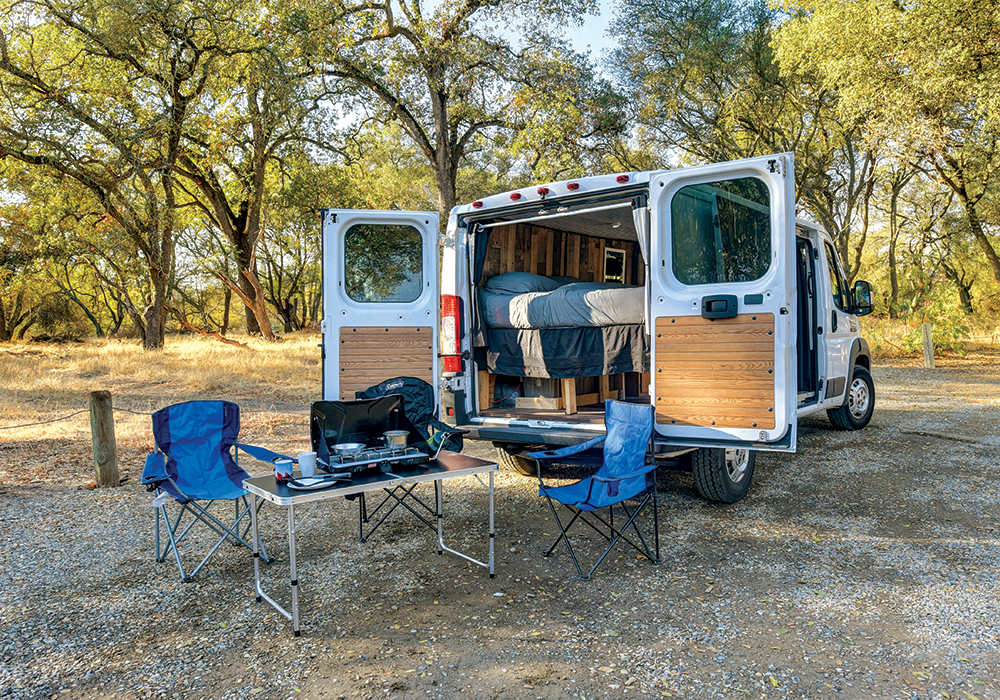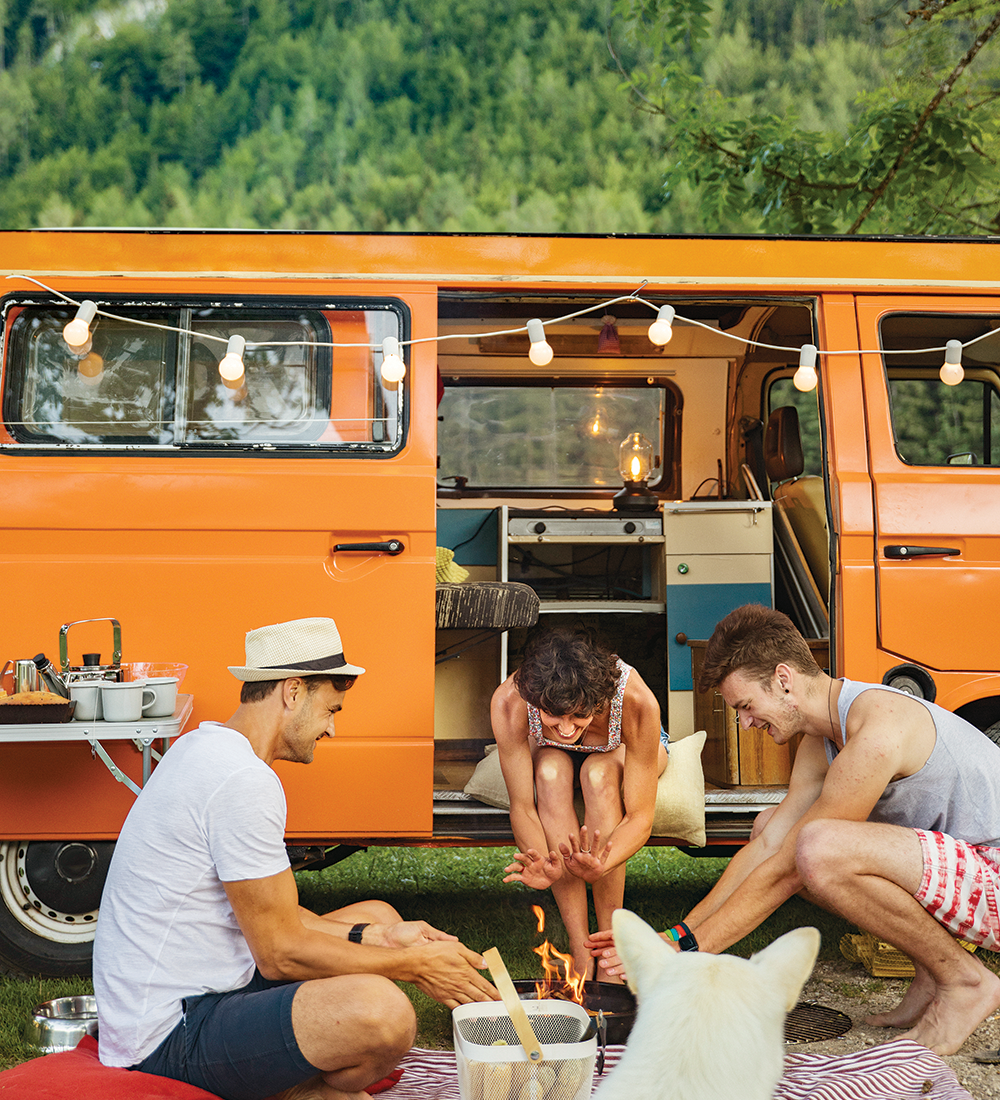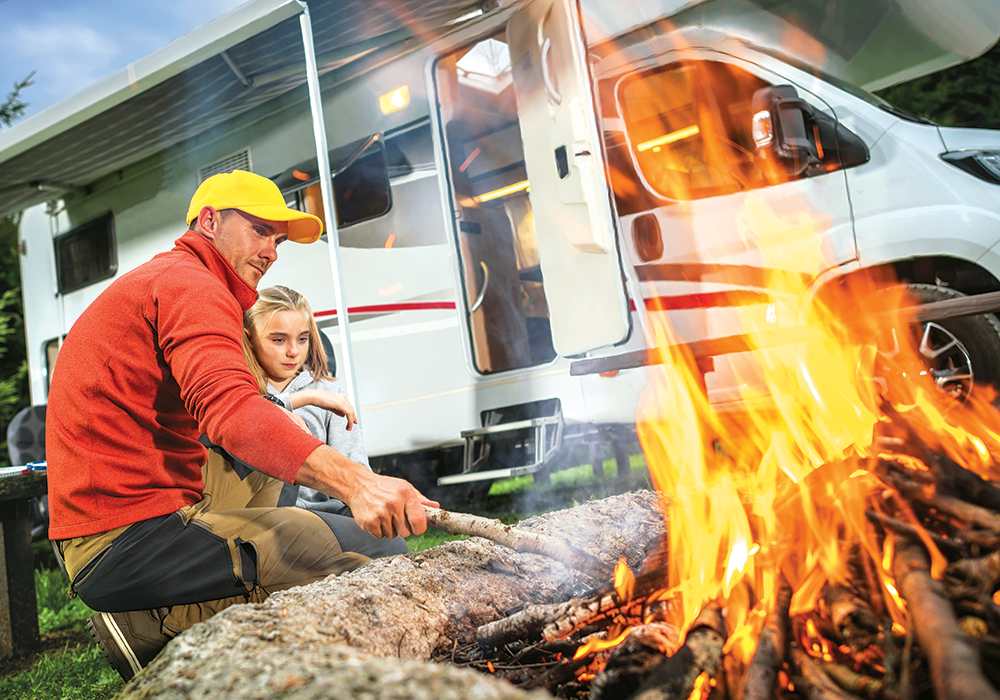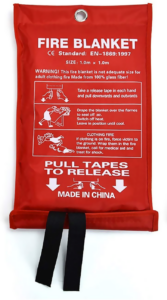From cooking on the gas burner to toasting marshmallows on a fire pit, if you’re out on the road, it’s wise to hone up on your fire safety skills. Liz Dobson shares some helpful advice for your next RV adventure.
Even the most seasoned caravan or motorhome owner can come across a fire hazard when travelling or parked up. Faulty wiring, or intense sunlight burning the surfaces in your mobile home: the reasons can range from the obvious to the totally unexpected.
In January 2021, a campervan caught alight at a New Zealand camping site, and unfortunately the owners lost everything. The tourists had converted the van themselves, and noticed smoke coming from it while having dinner when they were parked at a freedom camping site run by the Marlborough District Council.
Within 30 seconds the van was ablaze. The pair, who were only metres away when the fire started, collected water from the Wairau River to control the fire, while other campers threw water on the grass to stop the fire spreading, but by then the vehicle was already too far gone; the van was destroyed in less than ten minutes.
While not all campervan fires are this dramatic or devastating, summer is a prime time for fires as we spend time outside, enjoying barbecues, toasting marshmallows over an open fire, or a classic sit-around a fire pit with fellow travellers.
Let’s cover the basics of what you need before you leave home, and then focus on those what-ifs.

Essential equipment
Every caravan and motorhome should be fitted with a long-life smoke alarm. Fire and Emergency NZ says that as caravans and campervans usually only have one door and few window openings, it’s especially important to make sure you have working smoke alarms installed and that you’re testing them regularly.
Ideally, you should also have a carbon monoxide alarm, gas alarm, fire blanket, and a fire extinguisher, which needs to be checked annually. An ABE dry powder fire extinguisher is best suited for mobile homes and every member of your family needs to know how to use it.
Fire and Emergency NZ say that when operating a fire extinguisher, use the ‘PTASS’ technique:
- Pull the safety pin or remove the clip.
- Test squirt the extinguisher to make sure it is working.
- Aim the nozzle at the base of the fire from a safe distance. Most extinguishers are designed to be operated from about 2-3 metres away.
- Squeeze the handles.
- Sweep the extinguisher from side to side while aiming at the base of the fire.
Fire and Emergency NZ also advises using proper lighting units or torches and don’t use candles as they may start a fire.
Only use fixed heaters inside your vehicle, and make sure furniture and fittings are at least one metre from any heaters. Oil column heaters or fan heaters with a cut-off switch are the safest.
Before going anywhere, check electrical appliances for frayed cords and other damage. Caravans and motorhomes should also have a current Electrical Warrant of Fitness.
Outside issues
You’re parked up for the night in an idyllic freedom camping spot, it’s a gorgeous evening and you’re going to build a fire outside to roast marshmallows. Before you light the first match, make sure you have something to put out the fire if it gets out of control. Even if you’ve been lighting fires for years, and you know how to set one up safely, something as simple as a sudden gust of wind can change the situation in a matter of seconds.
If you can, have a bucket of sand (or dirt) nearby so you can smother the fire. When you’ve finished for the night, use the dirt/sand as well as water to put out the fire, but check on it regularly. Fires can reignite hours afterward – all it needs is fuel and oxygen, so keep an eye on the embers, and add more dirt/sand if needed.
If your gas barbecue catches on fire, your fire blanket is the ideal method to smoother it.

Treating burns
No one intentionally burns themselves (despite sometimes forgetting that my saucepan handle is metal and I have the blisters to show for it – I know it’s not just me!), but if you get burned while cooking, you need to immediately apply water.
If you don’t have an endless water tank supply, instead plunge the burn into a bucket of water for at least 10 minutes: St Johns suggests 20 minutes. If you don’t have water immediately to hand, use any cool clean fluid, such as beer or soft drink. (It goes without saying that spirits are NOT a good idea!)
Make sure your first aid kit has burn gel, and apply that after the cooling period. If the burn area blisters, apply covering – if need be, wrap the wound in clean plastic kitchen wrap. Do not burst the blister because an infection may occur and complicate the injury.
Fire Prevention
- If the fire is serious, have someone ring 111; it’s easier to ring and cancel if you get the fire under control than have the fire get out of control and it’s too late for the fire service to help.
- Inside your mobile home, identify hot spots where fires can occur, such as heaters, cookers, and electrical items.
- Keep the kitchen area clean to prevent items such as tea towels from catching alight when using the gas cooker.
- Make sure you don’t have pressurised containers (such as hairspray or shaving foam) in a cupboard adjacent to a heat source like the oven or space heater.
- Don’t leave clothes drying near heaters or bedding left touching heaters while also checking that curtains or blinds are close to cooking appliances.
But the main rule is to know your limit. If you don’t have the equipment to deal with a serious fire, don’t set one alight. A happy camper is a safe camper.
TOP TIP
When you are cooking, avoid false alarms by using the silence feature to put the smoke alarm into a ‘hold’ status when you’re cooking. Press the button before you start cooking to silence the alarm for a pre-set period of time, between eight and 15 minutes depending on the brand. Don’t forget to turn it back on again after you’ve finished.
- ABE dry powder fire extinguisher
- Smoke/carbon monoxide/gas alarms
- Fire blanket
- Metal bucket (for sand/dirt)
- Full first aid kit
In the case of a serious burn, ring 111.
If a person catches fire, use the fire blanket to smother them then call 111.







